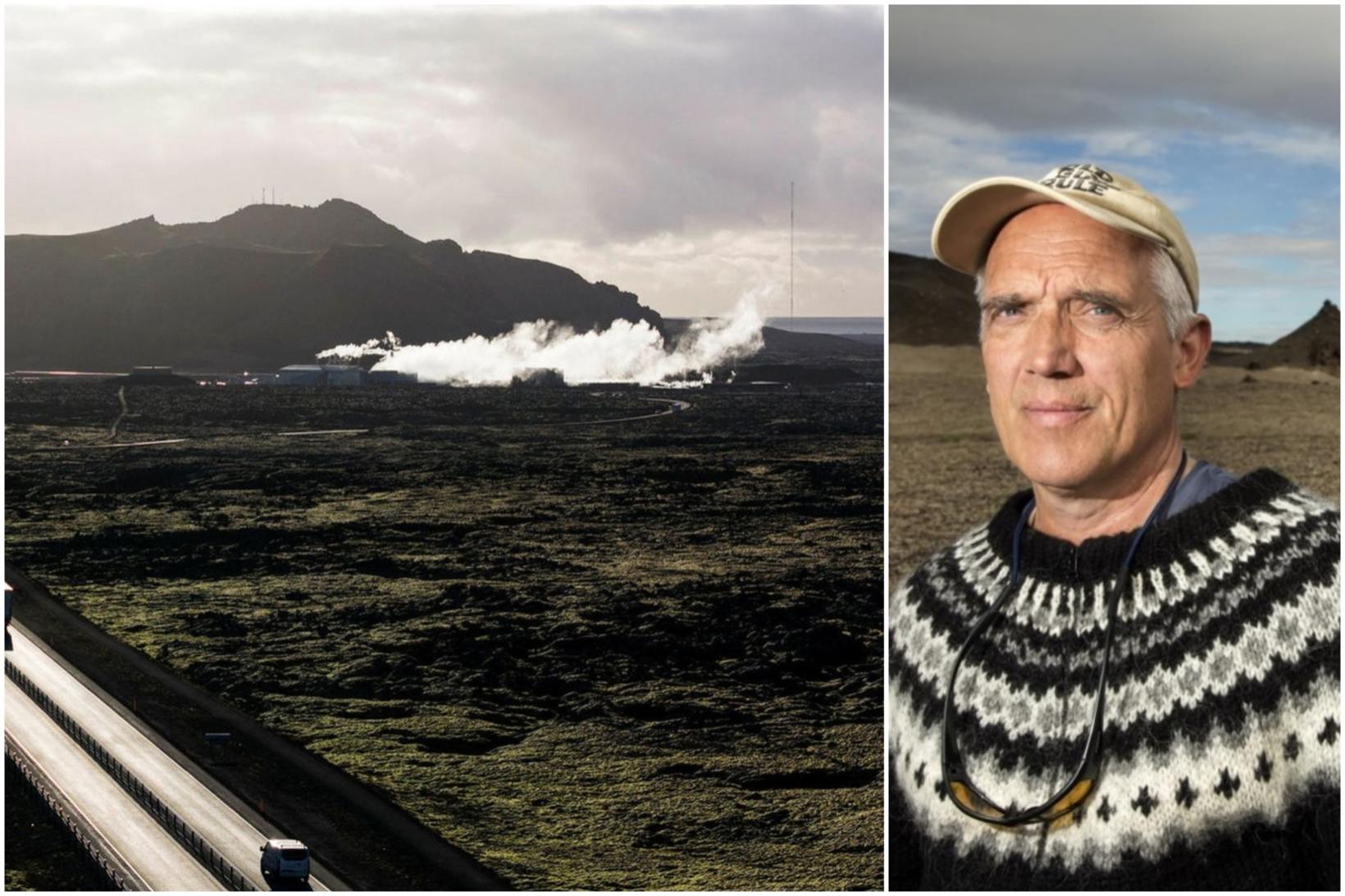Not a question of if, but when
Ármann Höskuldsson, eldfjallafræðingur, segir ekki útilokað að gjósa muni í Sundahnúksgígum. Líkurnar fari þó minnkandi eftir því sem lengra líður og ekkert kemur upp.
With every day, the chances of a volcanic eruption in the Sundhnúka crater row decrease and the likelihood of an eruption in Eldvörp increase. It is not a question of whether there will be a volcanic eruption in the coming days and weeks, but rather, where.
This is what Ármann Höskuldsson, volcanologist at the Institute of Earth Sciences at the University of Iceland, says to mbl.is.
“It’s quite clear that there will be a volcanic eruption, but it’s a question of where it will occur. The big raft movements have started and the whole system has begun to open up. It’s quite clear that there will be a volcanic eruption sometime in the next few days, at least in a week or two,” Höskuldsson says.
“We had very strong earthquakes on Friday, and there have been ongoing seismic activity throughout the weekend, and while there’s no fire coming out of the Sundhnúka crater row fissure, the chances of something happening in the Sundhnúka crater row decrease,” Höskuldsson says.
He says that Friday and Saturday were actually the most likely days for an eruption in the Sundhnúka crater row. As a result, the likelihood of an eruption in that location decreases with every day passing.
More likely that the magma comes up in Eldvörp
“The magma that’s out there in Eldvörp is unlikely to have gone all the way to this tunnel [the Sundhnúka fissure], possibly something, but it’s still there. Now it’s just going to be apparent in the next few days, if it keeps rising there and keeps lifting up the ground in Eldvörp and under the Illahraun fissure, then the chances are that magma will appear there, not in the Sundhnúka fissure,” he says.
Now, we need to look at the measurements in the next few days to see if the land rise is still going on in Eldvörp.
Next are Bláfjöll, Krýsuvík or Hengill
“When the magma has accummulated enough enough to reach the surface, it does so more there [in Eldvörp] than at the Sundhnúka fissure,” Höskuldsson says.
“First of all, we’re at a tectonic plate boundary. The plates are constantly going apart but right now the plates themselves, they can hold on for a while but when they break, conditions arise so that magma reaches the surface and that’s what’s happening on Reykjanes,” Höskuldsson says, adding that this situation will be going on for the next 10-15 years on Reykjanes peninsula.
“When this system is finished, the next system will start. Then we’ll either go to Bláfjöll or Krýsuvík or even to Hengill.


/frimg/1/45/13/1451333.jpg)





/frimg/1/57/94/1579405.jpg)

/frimg/1/57/87/1578747.jpg)
